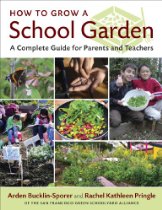 You know what I like about summer? Everything. But especially gardening. This year, I took a new tack on battling my yard’s clay soil and spent a pleasant spring weekend slapping together raised beds. A few trips to Grizzly Peak Stables (another added benefit of gardening: an opportunity to shovel horse manure without having to go to the state capitol …) and now my tomatoes are head-high and fecund with grape-clusters of bottled sunshine. You can’t buy tomatoes like this for love or money.
You know what I like about summer? Everything. But especially gardening. This year, I took a new tack on battling my yard’s clay soil and spent a pleasant spring weekend slapping together raised beds. A few trips to Grizzly Peak Stables (another added benefit of gardening: an opportunity to shovel horse manure without having to go to the state capitol …) and now my tomatoes are head-high and fecund with grape-clusters of bottled sunshine. You can’t buy tomatoes like this for love or money.
More than the produce, I love the minor manual labor, the quiet moments of reflection during morning watering, marking the seasons by crops, and the earthy satisfaction of of good, hot, compost. It’s a small garden, but it gives me a lot of pleasure.
I was lucky enough to have a mom to teach me, a farm to grow up on, and a stint in the Peace Corps to refine my growing techniques (hunger is a great motivator). But what of those who grow up without an entre to the joys of gardening? The millions of kids growing up in an increasingly urban world, divorced from the roots of food production, isolated in concrete jungles and digital realities? What about them?
The answer, my friends, is school gardens. The Bay Area is home to a vibrant movement to grow the next generation of home farmers and healthy eaters by starting gardens — and a gardening culture — at local schools. It’s a fantastic idea with multiple returns from the pedagogical to the physical. But Arden Bucklin-Sporer and Rachel Pringle say it better: “Enriching a school on so many levels, a garden program is a gentle rebellion of sorts — an antidote to the sour note of diminishing resources.”
That’s a lovely line from their new book, How to Grow a School Garden: A Complete Guide for Parents and Teachers, from Timber Press. Yes, like all things gardening-related, there’s a DIY guide, and this one is from the the leaders of the San Francisco Green Schoolyard Alliance. They’ve distilled their experience into a practical, schematic guide to getting a school garden off the ground, with well-written advice for getting buy-in from a school’s administration, how to fundraise effectively, and even how to organize volunteers on the first day of garden-breaking.
If you are looking for ways to make a difference in your community, you could do worse than starting a school garden. I’m hopeful that this book will be helpful in a national effort to inoculate kids against a sterile food future and introduce the joys and benefits of digging in the dirt to kids who might not otherwise get the chance.


